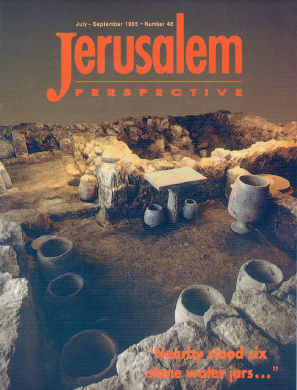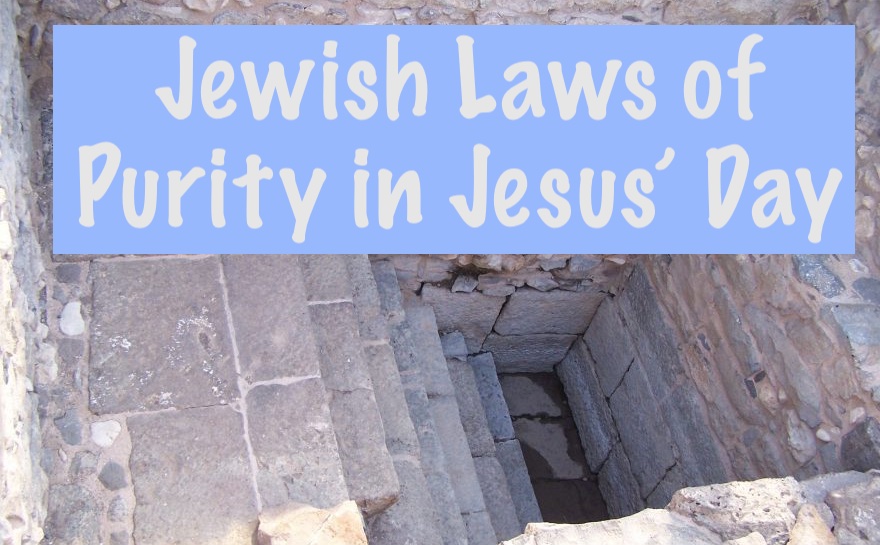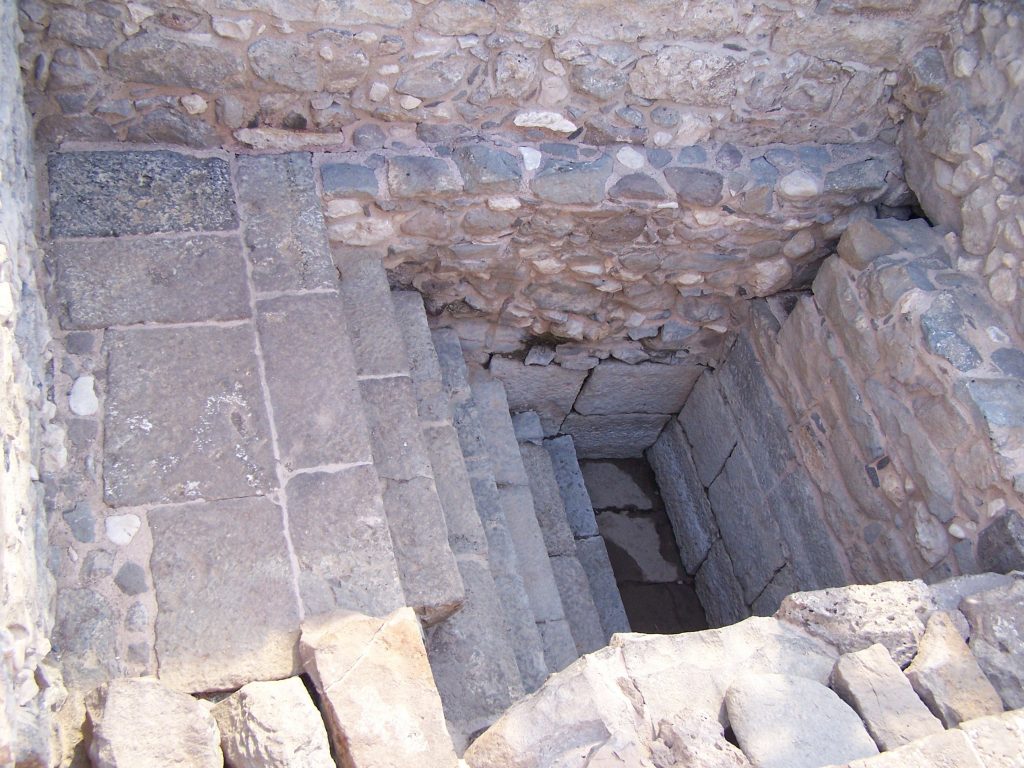The Hebrew Scriptures and other early Jewish writings place considerable emphasis upon the laws of נִדָּה (niddah, “menstruation,” “menstrual flow”; “menstruant”). The main foundational teaching on menstruation in the Hebrew Scriptures is found in Leviticus 15:19-33. In addition, the sixth division of the Mishnah, Tohorot (Cleannesses) contains a tractate titled Niddah (The Menstruant). Furthermore, the Babylonian Talmud devotes hundreds of pages to commentary on the laws of menstruation in the tractate Niddah, including numerous accounts of how the rabbis judged the “purity” of various stained cloths that had been presented for their examination (Niddah 20b).
The Regulations
According to the Bible, a woman is impure for seven days from the beginning of her menstrual flow (Lev. 12:2; 15:19). Anyone who touches a menstruous woman becomes unclean until evening (Lev. 15:19). Whoever touches her bed or anything she sits on during the week is unclean until evening and must wash his clothes and bathe with water (vss. 20-23).
Sexual relations during a woman’s period are forbidden (Lev. 18:19; Ezek. 18:6; 22:10). The penalty for the man and woman who violate this prohibition is being “cut off” from the people of Israel (Lev. 20:18). But should a woman’s menses begin during intercourse, the man and woman become unclean for seven days, and her condition of uncleanness is transferred to him (Lev. 15:24).
If a woman menstruates for more than seven days, or has an irregular discharge of blood at any time other than her period, her uncleanness ends only after seven “clean” days (Lev. 15:25ff.). On the eighth “clean” day, the final act of ritual purity involves the bringing of two doves or two young pigeons for sacrifice (Lev. 15:29ff.).
The sages extended the period when sexual relations between a husband and wife are prohibited to seven “clean” days following the menstrual period. This means that the total period of separation is about twelve days a month assuming a menstrual period of five days.
Purification
By the time of Jesus, bathing in water was an established part of the purification process following menstruation, but nowhere in the Bible is there mention of the menstruant bathing in water. Instruction on purification through the use of the mikveh (ritual bath) by menstruants may be traced to the time of the sages. An entire tractate of the Mishnah, Mikvaot, is devoted to immersion pools. To this day, for Jewish women committed to halachah (religious law), immersion in the mikveh is considered obligatory before marital relations can resume.

According to Leviticus 12:1-8, because of the bleeding associated with childbirth, a woman is ceremonially unclean after giving birth, just as she is unclean during her menstrual period. The uncleanness is for seven days if she bears a boy (vs. 2), and for fourteen days if she bears a girl (vs. 5). The mother must wait thirty-three additional days after a boy and sixty-six days after a girl to be finally “purified from her bleeding” (vss. 4-5). At the end of her time of uncleanness, she is to bring a sacrifice to the priest (vss. 6-8).
The Synoptic Gospels record an account of Jesus coming into contact with a woman who had suffered from a discharge of blood for twelve years (Matt 9:20-22; Mark 5:25-34; Luke 8:43-48). Whatever the cause of her loss of blood, the Levitical restrictions (esp. Lev. 15:19-33) rendered her ritually unclean, and likewise anyone and anything she might touch, thus making her an exile among her own people. The moment the woman touched the cloak of Jesus, however, she was healed by the power of God, and her defilement removed. The New Testament is silent about whether the woman’s actions rendered Jesus ceremonially unclean and about her obligation to bring the prescribed offerings following cessation of her discharge (cf. Lev. 15:28-30).
Other Sources

In addition to the Bible, other Jewish sources indicate Judaism developed very strong and forthright teaching concerning niddah. For example, the Mishnah compares the uncleanness of an idol to the impurity of a menstruating woman (Shabbat 9:1). The failure to heed laws concerning menstruation was considered one of three transgressions for which women die in childbirth (Mishnah, Shabbat 2:6). Josephus states that women during the menstrual period were not permitted in any of the courts of the Temple (Against Apion 2:103-104; War 5:227). The social separation of women during their menses is further emphasized in the Talmud.
The Mishnaic sages taught that women were exempt from religious ordinances whose fulfillment depended upon a certain time of the day or the year (Mishnah, Berachot 3:3; Kiddushin 1:7). Thus, the lengthy periods of seclusion mandated by their ritual uncleanness, as well as their responsibilities at home, led to a general non-participation of women in the public activities of community religious life. A woman’s routine, however, could change somewhat at menopause. An “old woman,” according to the Mishnah, is one who has missed three menstrual periods (Niddah 1:5).
Excerpt of a letter from Mrs. C. M. Didsbury (Uphill, Weston-Super-Mare, Avon, England) that was published in the “Readers’ Perspective” column of Jerusalem Perspective 48 (Jul.-Sept. 1995): 8.
After reading Marvin Wilson’s “Jewish Laws of Purity in Jesus’ Day” (Jerusalem Perspective 37 [Mar.-Apr. 1992], 11, 17), I must admit to finding the reality of the situation of women (e.g., anyone touching anything she sits on during menstruation, to be also unclean) depressing. How did women express their spirituality? Did they have any power? Mary was a woman. God loved and used her.
Chana Safrai responds:
In discussing Jewish regulations of ritual purity, one should not forget that this system of laws is biblically based. Scripturally, there are five causes of uncleanness:
- Contact with a dead body (Num. 19:11-22).
- Contact with the carcasses of living creatures (Lev. 11:23-44).
- Bodily discharges including emission of semen, menstrual flow (Lev. 15) and the woman’s bleeding at childbirth (Lev. 12).
- Skin diseases (Lev. 13-14).
- Contact with sanctified space or objects. Those who prepared the ashes of the red heifer became ceremonially unclean as a result of their holy labor (Num. 19:1-10); the high priest was required to bathe himself with water between his various duties on the Day of Atonement (Lev. 16:4, 23-24).
The Hebrew expressions טָהֳרָה (ṭo·ho·RĀH, “cleanness,” “purity”) and טֻמְאָה (ṭum·’ĀH, “uncleanness,” “impurity”) are technical terms that have no positive or negative connotations. Scripturally, one is either in a state of purity, or not in a state of purity. Uncleanness is a human phenomenon, almost commonplace, and one must view the contrast between clean and unclean as a contrast between that which is holy and that which is not (Lev. 11:47), between that which is divine and that which is human. Ritual cleanness and uncleanness should not be thought of as a contrast between good and evil.
Furthermore, regulations pertaining to cleanness and uncleanness do not single out women. There are types of uncleanness specific to men, and there are types specific to women, but most apply to both sexes.
Feminists have often failed to recognize these distinctions. Biblical regulations pertaining to ceremonial cleanness do not negate a woman’s religious experience; they emphasize unique feminine life experiences (gender appreciation). Thus, after giving birth, a woman made a pilgrimage to the Temple in Jerusalem to bring the prescribed sacrifice and to purify herself. She did not come with a sense of guilt, but came celebrating a distinctive feminine experience. Her religious ceremony in the Temple was a celebration of femininity.
The biblical prophets (especially Ezekiel) and poets sometimes employed the terms “clean” and “unclean” as metaphors for good and evil: “And he will cast pure water on you and you will be clean” (Ezek. 36:25); “Cleanse me from my iniquity and purify me from my sin” (Ps. 51:4). Perhaps “clean” and “unclean” were already used metaphorically in the Pentateuch in the passage about unlawful sexual relations (Lev. 18). In this passage, a connection is made between detestable pagan practices and ritual impurity, and God’s demand that the Israelites keep themselves undefiled by not engaging in such practices.
Joseph Frankovic adds:
It is nearly impossible in English to find a one-word equivalent that adequately expresses the sense of the biblical and rabbinic technical term טָמֵא (ṭā·MĒ’). Most one-word equivalents used to translate ṭā·MĒ’, such as “unclean” or “impure,” carry a conspicuous negative prefix. However, the term does not convey a sense of moral judgment unless the state of impurity has been achieved by an act proscribed by Torah. The term may simply mean incompatibility with or unreadiness to enter God’s sphere (e.g., the Temple sanctuary).
Perhaps a helpful way to grasp one nuance of the term’s meaning is by analogy. In designing a house, one does not put the dining room next to the bathroom. The activities of the bathroom do not complement those of the dining room. Neither bathroom nor dining room activities, however, are sinful, just incompatible. Also, note carefully Saul’s assumption about David’s absence at the royal meal (1 Sam. 20:26). He seems to arrive at his conclusion about David with no hint of alarm or disgust.

Joseph of Arimathea (Luke 23:53, and parallels) took Jesus’ body down from the cross, wrapped it and laid it in a rock-hewn tomb. He became ceremonially unclean through this contact with a corpse. His ritual state was a result of his righteous behavior. If one is to take Jesus’ humanity seriously, then one must assume that Jesus went through cycles of being ceremonially clean and unclean. Whether Jesus, at a given moment, was “clean” or “unclean” said nothing about his moral character. The vast majority of New Testament scholars believe that Joseph (Mary’s husband) died before Jesus began his public ministry. Did Jesus participate at his father’s funeral? Did he come in contact with Joseph’s corpse? If he did, then he too, through this caring deed, would have become ritually impure.[1]
For more on the topic of ritual purity, see the JP article by Joshua N. Tilton, “A Goy’s Guide to Ritual Purity.”
- [1] On the possibility that Jesus himself occasionally became ritually impure, see JP Staff Writer, “What’s Wrong with Contagious Purity? Debunking the Myth that Jesus Never Became Ritually Impure,” Jerusalem Perspective (2024) [https://www.jerusalemperspective.com/29371/]—JP. ↩

































































































